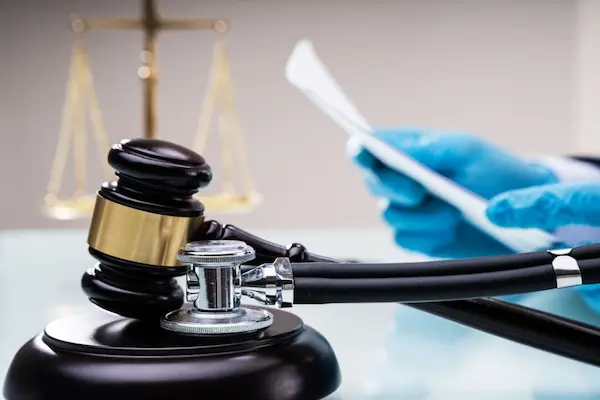Medical malpractice is a serious issue, impacting the lives of countless patients worldwide. When healthcare professionals fail to provide an adequate standard of care, the consequences can be devastating. In this article, we will explore the various aspects of medical malpractice, from understanding its legal definition to navigating the complexities of filing a claim. We’ll also discuss how firms like DiPiero Simmons McGinley & Bastress, PLLC, can help you protect your rights in these cases.
What is Medical Malpractice?
Medical malpractice occurs when a healthcare professional, such as a doctor, nurse, or pharmacist, fails to provide care that meets the accepted standards of their profession, resulting in harm to the patient. This may include errors in diagnosis, treatment, or medication administration. To prove medical malpractice, the plaintiff (the injured party) must demonstrate the following elements:`
- Duty of care: The healthcare professional had a duty to provide care to the patient.
- Breach of duty: The healthcare professional failed to meet the accepted standard of care.
- Causation: The breach of duty directly caused the patient’s injury or harm.
- Damages: The patient suffered damages as a result of the healthcare professional’s negligence.
It’s important to note that not all medical errors are considered medical malpractice. In some cases, complications or poor outcomes arise despite the healthcare provider delivering appropriate care.
Types of Medical Malpractice
There are several types of medical malpractice, each with its own unique set of circumstances. Some common examples include:
Misdiagnosis or Delayed Diagnosis
A misdiagnosis occurs when a healthcare professional fails to accurately identify a patient’s condition, while a delayed diagnosis refers to a significant delay in identifying the ailment. Both scenarios can lead to improper treatment and worsening of the patient’s condition.
Surgical Errors
Surgical errors encompass a wide range of mistakes that can occur during a surgical procedure. This may include operating on the wrong body part, leaving surgical instruments inside the patient, or causing damage to organs or nerves.
Medication Errors
Medication errors involve the improper administration or prescription of drugs. This may include prescribing the wrong medication, incorrect dosage, or failing to consider harmful drug interactions.
Anesthesia Errors
Anesthesia errors occur when an anesthesiologist or nurse anesthetist fails to administer anesthesia properly, leading to complications such as brain damage, paralysis, or even death.
Birth Injuries
Birth injuries result from negligence during pregnancy, labor, or delivery, causing harm to the infant or mother. Examples include failure to monitor fetal distress, improper use of forceps, or delays in performing a necessary cesarean section.
The Process of Filing a Medical Malpractice Claim
If you or a loved one has been the victim of medical malpractice, it’s vital to follow the appropriate steps to protect your rights and seek compensation for damages. Here is a general outline of the process:
Consult with an Attorney
The first step is to consult with an experienced medical malpractice attorney, such as those at DiPiero Simmons McGinley & Bastress, PLLC. They will evaluate your case, help you understand your legal options, and guide you through the process.
Gather Evidence
Your attorney will help you gather evidence to support your claim. This may include medical records, expert witness testimony, and documentation of your damages, such as lost wages or medical bills.
File a Complaint
Next, your attorney will file a formal complaint with the appropriate court, outlining the allegations against the healthcare provider and requesting compensation for damages.
Discovery
During the discovery phase, both parties will exchange information and evidence. This may involve depositions, interrogatories, and requests for documents.
Settlement Negotiations
In many cases, medical malpractice claims are resolved through settlement negotiations. Your attorney will negotiate with the defendant’s legal team to reach a fair and just compensation amount.
Trial
If a settlement cannot be reached, your case may proceed to trial. During the trial, both sides will present their evidence and arguments before a judge or jury, who will then determine whether the defendant is liable for your damages and, if so, the appropriate compensation amount.
Statute of Limitations
It’s crucial to be aware of the statute of limitations for medical malpractice claims. This is the time frame within which you must file your claim, and it varies by state. Failing to file within the statute of limitations can result in losing your right to seek compensation. An experienced attorney can help you navigate these deadlines and ensure your claim is filed in a timely manner.
Preventing Medical Malpractice: Tips for Patients and Healthcare Providers
While understanding the legal aspects of medical malpractice is crucial, prevention should be the ultimate goal. Both patients and healthcare providers can take steps to reduce the risk of medical errors and improve the overall quality of care. Here are some tips for both parties:
Tips for Patients
- Be proactive in your healthcare: Educate yourself about your medical conditions and treatments. Ask questions and actively participate in decision-making regarding your care.
- Choose your healthcare providers carefully: Research your healthcare providers’ credentials, experience, and history of malpractice claims before entrusting them with your care.
- Keep accurate records: Maintain up-to-date records of your medical history, medications, allergies, and any previous surgeries or procedures. Share this information with all healthcare providers involved in your care.
- Communicate openly and honestly: Clearly communicate your symptoms, concerns, and any changes in your condition to your healthcare providers. Don’t hesitate to ask questions if you don’t understand something or need clarification.
- Follow your treatment plan: Adhere to your prescribed treatment plan, including taking medications as directed and attending follow-up appointments.
Tips for Healthcare Providers
- Stay current with medical advancements: Regularly attend continuing education courses, workshops, and conferences to stay informed on the latest medical knowledge, techniques, and best practices.
- Implement effective communication strategies: Encourage open and honest communication among your team members and with patients. Establish clear protocols for sharing patient information and discussing potential issues or concerns.
- Create a culture of safety: Foster a work environment that prioritizes patient safety and encourages team members to report errors or near misses without fear of retribution. Use these incidents as opportunities to learn and improve.
- Utilize technology and electronic health records (EHRs): Implement EHR systems to streamline documentation, reduce the risk of medication errors, and facilitate better communication among healthcare providers.
- Seek feedback and continuously improve: Regularly evaluate your practice’s performance and actively seek feedback from patients and team members. Identify areas for improvement and implement changes as needed to enhance patient care and safety.
By working together, patients and healthcare providers can help prevent medical malpractice and ensure that everyone receives the highest quality of care possible.
Final Thoughts
Medical malpractice is a complicated and emotionally charged issue, but understanding the legalities and your rights can empower you to take action. If you believe you or a loved one has been the victim of medical negligence, don’t hesitate to consult with an experienced attorney like those at DiPiero Simmons McGinley & Bastress, PLLC. They can provide invaluable guidance and support throughout the process, helping you pursue justice and the compensation you deserve.
Read Also: The Benefits Of Hiring A Private Attorney Vs Appointed Representation







